How to Stop iPhone Apps From Wasting Your Data
Learn how to stop popular iPhone apps like Facebook and Instagram from eating up your phone’s data.

- iPhone apps consume data even when you’re not actively using them. Common activities such as background refresh, multimedia streaming, and syncing are major data-eaters.
- iPhone users can disable or toggle on various settings on each app, including using low-data mode and setting data-usage limits.
- It’s best to connect to Wi-Fi whenever possible to avoid relying on your cellular data.
Those of us whose cell phone plans have data caps sometimes have trouble staying under the limit. Exceeding the limit means a potential service cutoff or paying extra fees for data usage. For iPhone users, apps that quietly run in the background waste a lot of data. If you want to optimize your iPhone apps for lower data consumption, we have you covered. We’ve put together a step-by-step guide for each popular app after testing the settings on our own iPhones.
Ways to Stop iPhone Apps From Wasting Data
- Turn Off Autoplay on Facebook
- Change Video Quality Performance on YouTube
- Turn On ‘Save Data’ on Netflix
- Change the Media Quality on Instagram
- Adjust Sound Quality on Spotify
- Download Directions Offline on Google Maps
- Other Ways to Save iPhone Data
- Frequently Asked Questions About iPhone Apps Data Usage
Turn Off Autoplay on Facebook

One of the main culprits in Facebook’s excessive data consumption is the autoplay feature for videos. When you browse your Facebook newsfeed, you may notice that videos start playing without you tapping Play. That means scrolling through your newsfeed can add significant data consumption even if you don’t want to watch a video. Some videos may even be high-resolution, which uses extra data. Here’s how to limit autoplay videos on Facebook.
- Navigate to Settings & privacy.
- Scroll down to find Media.
- Tap Autoplay.
- Toggle on Never Autoplay Videos.
Change Video Quality Performance on YouTube
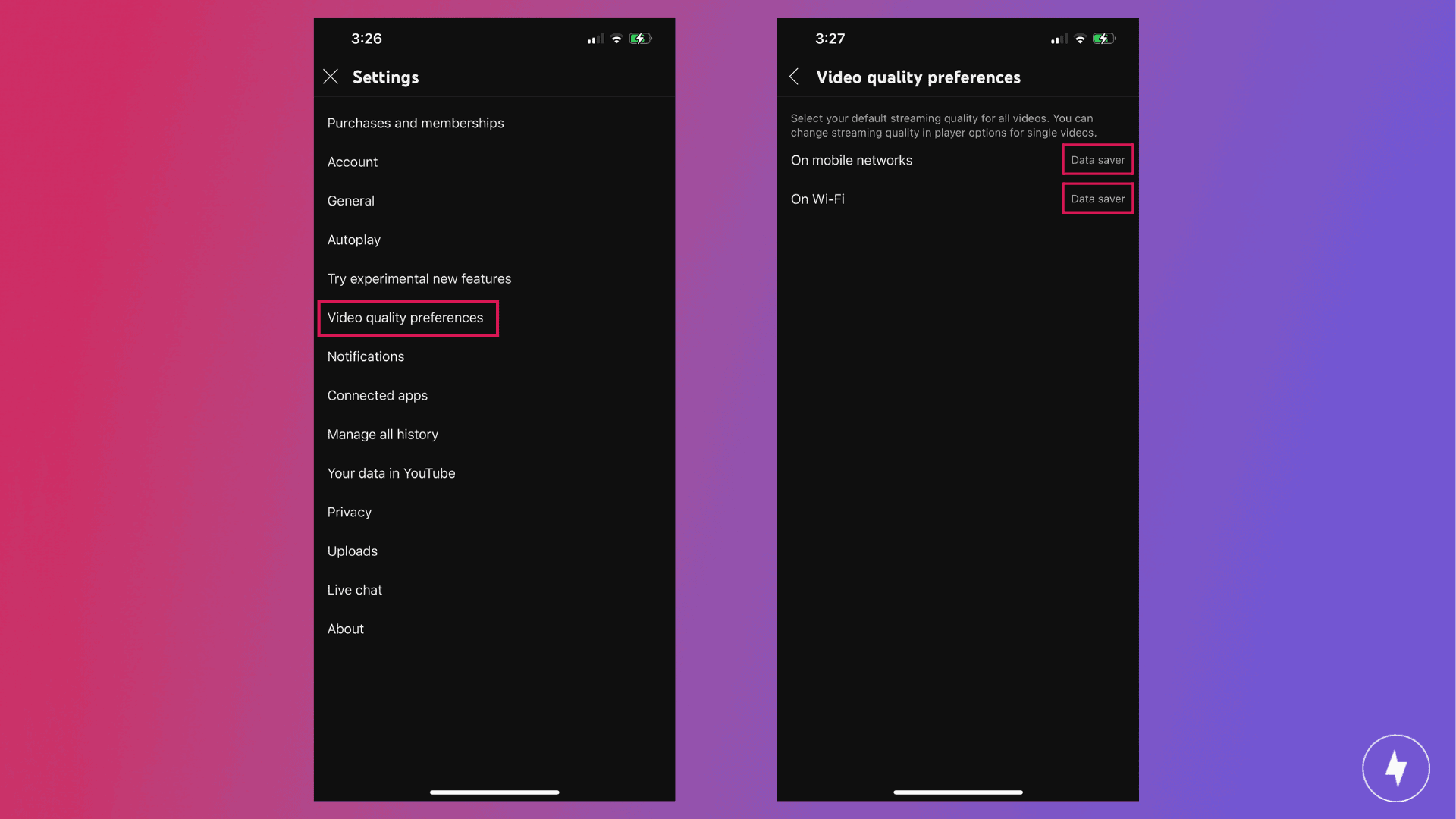
Watching a lot of videos — especially on your iPhone — may be a one-way ticket to an expensive internet or phone bill. YouTube doesn’t autoplay videos, but it’s often ranked highly in smartphone data-usage stats. One thing you can do to minimize data consumption when using cellular data is to adjust the video quality. The YouTube app adjusts the video quality based on the internet speed and connection, so you may have to change the settings on the video you’re watching. I’ve watched videos in 720p, which tends to be the default, while using mobile data, but I’ve changed it to 480p when I wanted the video to fully load before watching. Here’s how to change the setting.
- Tap your profile icon.
- Go to Settings.
- Go to Video quality preferences.
- Change Auto to Data saver for On mobile networks.
- For On Wi-Fi, change the setting to either Data saver or Higher picture quality.
How Much Data? One of the major reasons YouTube is a top data-wasting app is the high-quality videos. Many users watch YouTube videos in 1080p, which consumes 1.65 GB per hour. That can get even higher if the video quality is 4K, which consumes about 2.7 GB per hour.
Turn On ‘Save Data’ on Netflix
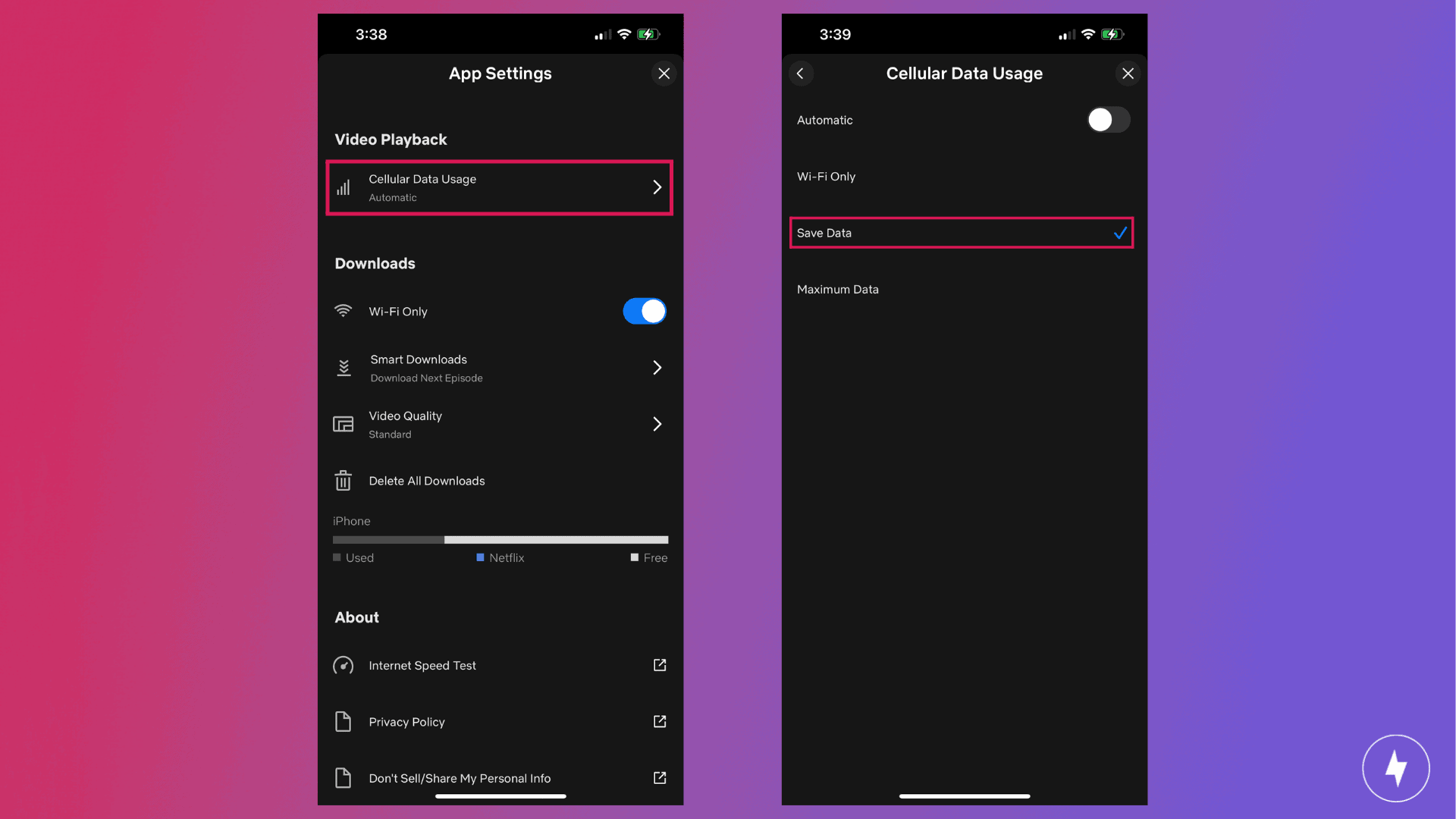
With over 220 million subscribers, Netflix is the most popular streaming app for iPhone users — and one of the biggest data-wasters. Netflix data usage depends on the duration and resolution of the video. Low-resolution video streaming on Netflix uses up to 0.3 GB per hour, but high-resolution video can be as high as 3 GB for HD videos and 7 GB for ultra HD videos. To reduce data usage on Netflix:
- Tap your profile picture.
- Go to App Settings.
- Find Video Playback.
- Tap on Cellular Data Usage.
- Switch to Save Data mode or Wi-Fi Only.
Change the Media Quality on Instagram
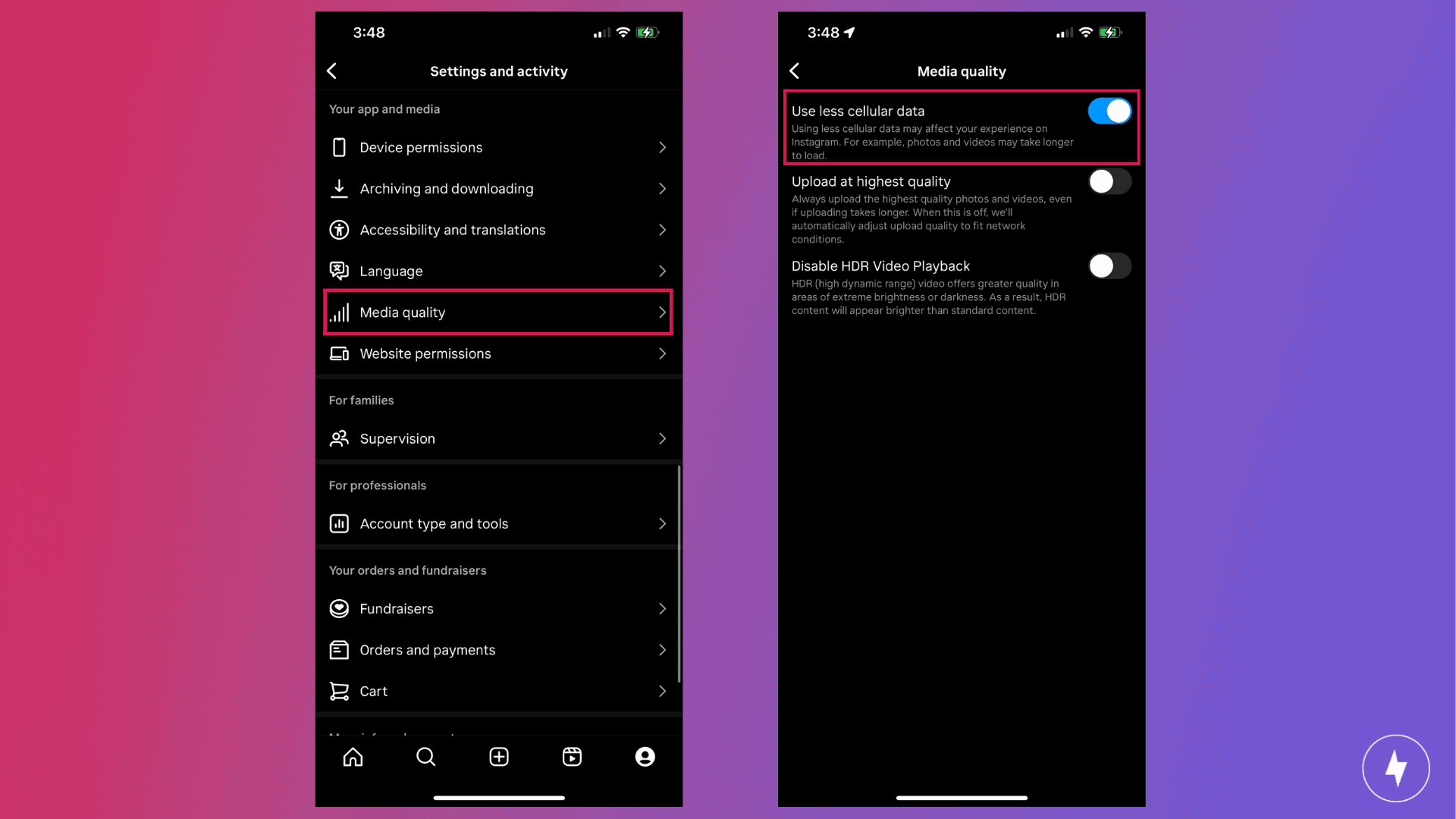
Instagram uses about 600 MB of data for every hour it’s open on your phone, which adds up to 16 GB of data per month for only one hour of use per day. Similar to other social media apps, Instagram preloads photos and videos instantly. As a result, you’re using data for photos and videos you may not even want to see. If you want to avoid that, follow the simple steps below.
- Tap the hamburger button when you view your profile.
- Go to Settings.
- Scroll down until you find Media quality.
- Turn on Use less cellular data.
Adjust Sound Quality on Spotify
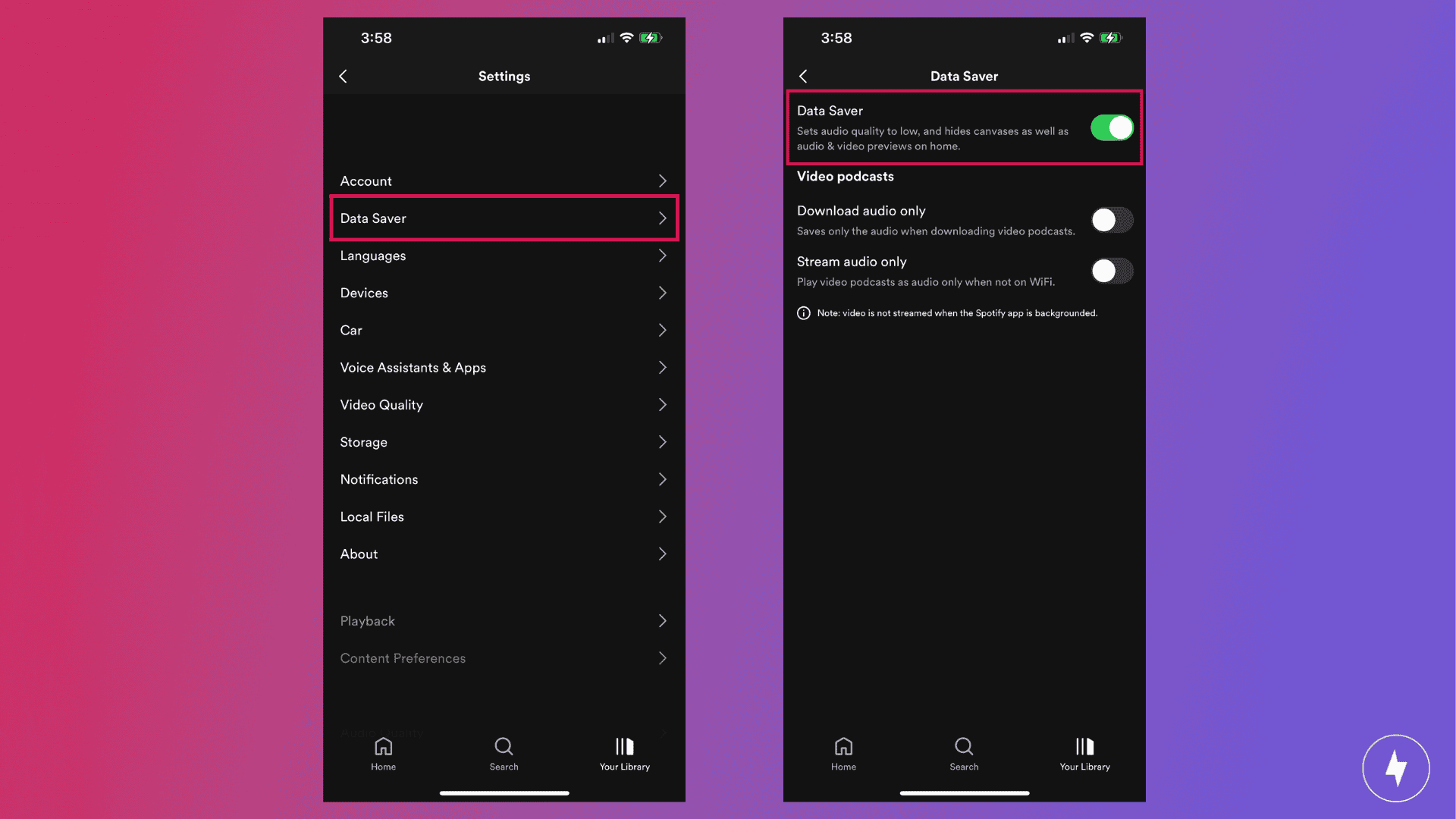
Spotify uses four types of audio settings: low, normal, high, and very high. The higher the quality, the more data is used. An hour of streaming music uses up to 150 MB of data. It may not sound like a lot, especially when compared to video- and photo-based apps, but Spotify’s data usage can quickly add up to a substantial amount. One way to reduce Spotify’s data usage is to download the songs directly on your device, a feature available only with a premium subscription. I’ve done it when I go on road trips and need to have carpool karaoke. Another way is to change your sound quality settings.
- Go to Settings via the gear icon.
- Tap Data Saver.
- Toggle on Data Saver to set the music quality to low.
Download Directions Offline on Google Maps
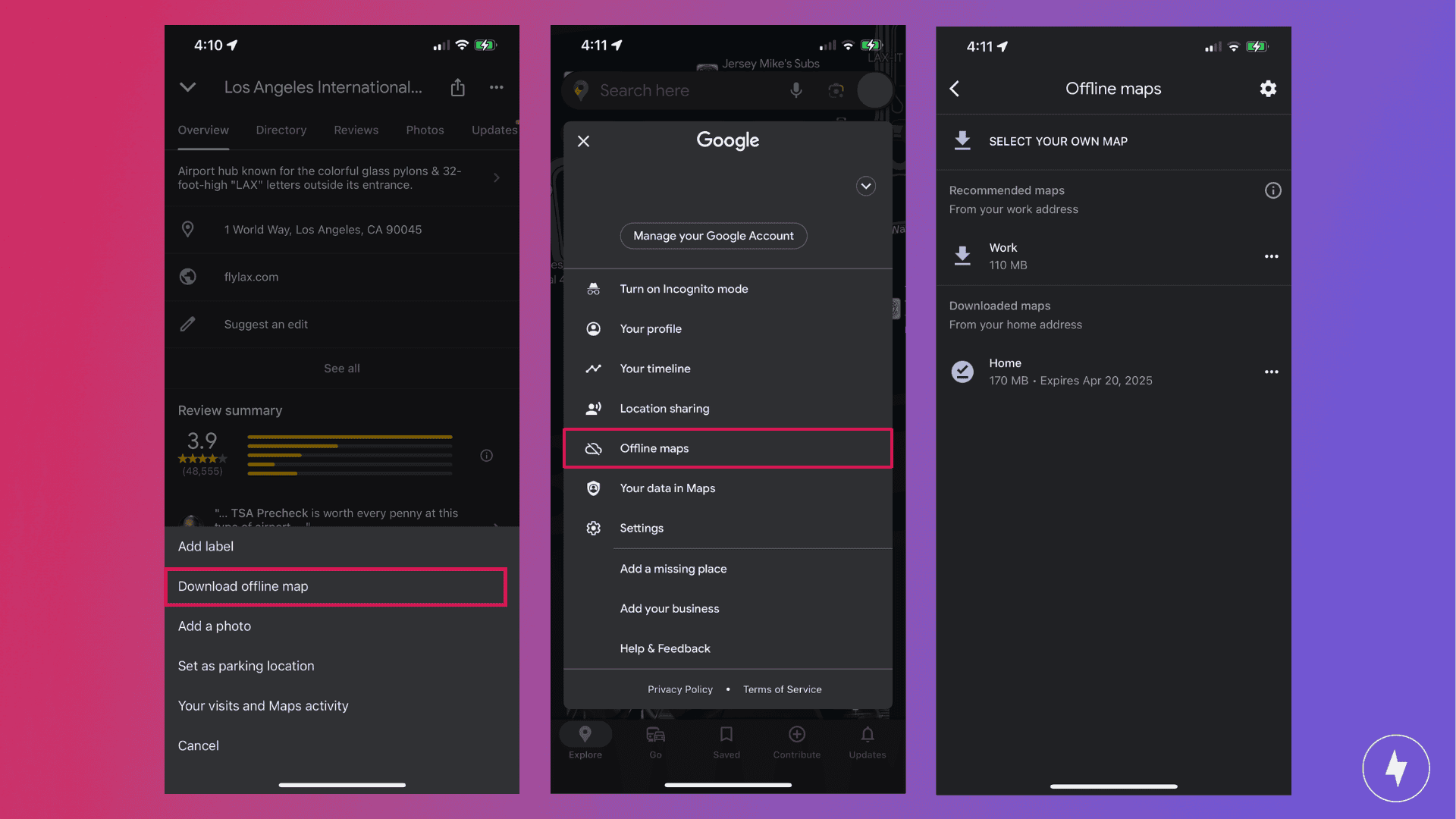
Google Maps uses around 3 MB to 5 MB every five minutes. If you use satellite image instead of the default or terrain mode, your data usage will increase. You can switch between modes by tapping the stacked square icon on the main screen. As someone who panics when Google Maps buffers while I’m driving to my destination, I found that downloading maps offline ahead of time saved me from anxiety. To save data while using Google Maps, set it to default mode and download directions to use offline. Follow these steps:
- Search your destination by entering the name or address.
- Tap the three dots next to the share icon after scrolling down.
- Tap Download offline map once you see the pop-up menu.
If the Download button doesn’t show up, try these steps:
- Enter your destination and let it show on the map.
- Tap your profile picture.
- Go to Offline maps.
- Choose Select your own map.
- Tap Download.
Other Ways to Save iPhone Data
Generally, you have multiple routes when it comes to saving your iPhone data. Instead of an app-specific solution, the following are common methods to reduce the amount of data wasted when using your iPhone.
- Turn off automatic updates and downloads. It’s easy to overlook this when you’re connected to Wi-Fi. The App Store on your iPhone will sometimes automatically update apps — you’ll see the app fade and a loading circle will appear — while others will remain in the queue for a manual update. If you want to manually update all your apps, turn off “App Updates.”
- Disable background refresh. You can do this in your iPhone settings by going to “General” and toggling off “Background App Refresh.” If you only want certain apps to refresh in the background, you can configure them individually.
- Disable Wi-Fi Assist. If your Wi-Fi connectivity is poor, your iPhone will pass off the connection to your cellular network instead. You can prevent that by toggling off “Wi-Fi Assist” under “Cellular.”
- Download content offline. Whether it’s photos, videos, or music, you’ll want to download content when you’re connected to Wi-Fi so you can view or stream it offline. That’s most useful in situations where you’re traveling or don’t have a strong Wi-Fi connection.
- Manually toggle cellular data. If you really want to avoid wasting your cell phone data, you can toggle your cellular data from “Primary” to “Off.” The only caveat is that you’ll need to remember to turn it back on if you need to use it again.
Frequently Asked Questions About iPhone Apps Data Usage
Why is my iPhone using data when I’m on Wi-Fi?
You may have turned on Wi-Fi assist, which automatically uses your cellular network if your Wi-Fi connection is poor. Toggle it off to avoid using phone data.
How do I find out how much data each iPhone app is using?
Go to “Cellular” in your iPhone settings and scroll down to see your list of apps with the amount of data used. Note that apps that use a ton of data are the only ones that show how much, instead of every single app.
How do I back up my iPhone data to iCloud?
You can back up your iPhone data by first connecting to Wi-Fi and then tapping “iCloud Backup.” Once the process is complete, it’ll show the date and time of your last backup.